
There's a moment in The Living Daylights which perfectly sums up the difference between Timothy Dalton's take on James Bond and the approaches of Sean Connery and Roger Moore. Bond and Kara (Maryam d'Abo), a cellist he's romancing for information on Koskov (Jeroen Krabbé) a recent Russian defector seemingly recaptured by Russian forces, are at a fair in Vienna. He goes to meet an MI6 ally, Saunders, for more information. As Saunders leaves, he is killed by Necros (Andreas Wisniewski), a henchman working with Koskov. Bond tries to apprehend the killer but is unable to locate him. When he reunites with Kara, he's visibly shaken and distraught about Saunders' death and drops all pretense of romance in favor of blunt anger.
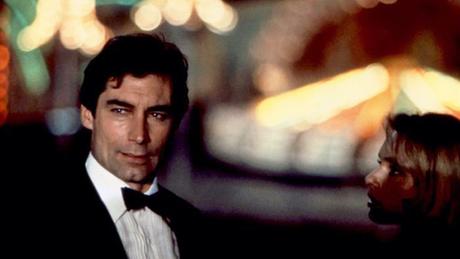
His reaction distinguishes him from Connery's suave detachment and Moore's sophisticated flippancy. They were never quick to show emotions, playing Bond as perpetually unruffled. Dalton approaches Bond as though he's an actual human being, with emotional impulses and a barely controlled temper. His next film, License to Kill, emphasizes Bond's emotional drives and anger even more, but it's here too, and it's different than the Bond films that precede it. The Living Daylights may not seem as grounded in a post- Casino Royale and Skyfall world, but at a time when Bond had recently been sent into space and dressed as a clown, it feels like a novel attempt at realism.
Bond is assigned to handle the defection of the above mentioned Russian General Koskov. While he attempts to escape, a woman appears in a window (d'Abo), rifle aimed in Koskov's direction. Bond is instructed to take her out, but he sees she's not a professional assassin and instead fires to disarm her.
As Koskov is debriefed, he gives information about a KGB policy, "Smiert Spionam," meaning "Death to Spies," which he purports is being reinstated by new KGB leader General Pushkin (John Rhys-Davies), who he claims is targeting him. When Koskov is recaptured from a British safe house, Bond is sent to find and kill Pushkin. When he realizes the cellist he stopped from killing Koskov is also Koskov's girlfriend, he brings her along, hoping to get additional information. Instead, he finds a plan to frame Pushkin and an arrangement made with an American arms dealer (Joe Don Baker) and a plan to smuggle opium. There are also Afghani rebels, but honestly, this plot description is complicated enough.
The film's narrative is dense, probably unnecessarily so, but I'd be lying if I didn't admit to enjoying the plot's twisty preposterousness. It inspires admirably incredulous laughter with its complicated but compelling storyline.
How much The Living Daylights works or doesn't work for you will depend on your fondness for Dalton's darker, more serious take on the character. Even his initial, "Bond. James Bond," feels consciously tossed-off and played straight, and it reflects the more business-like, driven nature of his Bond, something his next feature, License to Kill relishes. He's rarely glamorous and the iconic tuxedo and three-piece suit are barely present. This is a Bond that feels more of his time, with less pastiche.
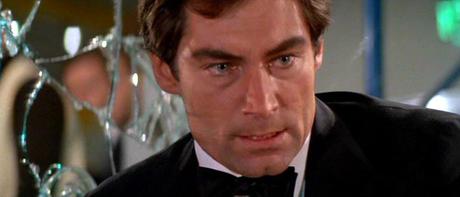
His Bond, operating at a time in which AIDS was at the forefront of public consciousness, is practically celibate by 007 standards, romancing only one, perhaps two, women during the course of the film. He's debonair and handsome but also possesses an inherent ruthlessness beneath the sophistication. Dalton is stoic and serious, attempting to ground the movie's built-in absurdity. That's either pleasantly refreshing or Bond sacrilege, depending on what you look for in your Bond movie. His quips are minimized, and his actions, lacking Connery's sardonic smirk, feel uglier than as a result.
Take the moment in which Bond confronts Pushkin and his liaison in a hotel room.
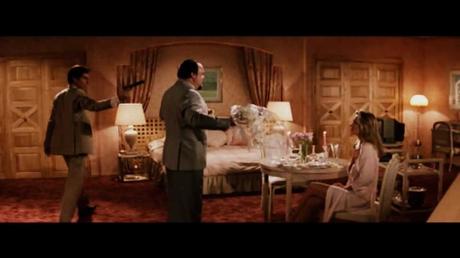
Pushkin alerts a guard to the disturbance. Bond rips off the woman's robe, using her nudity as a distraction that allows him to disable the guard. For a franchise whose gender politics are frequently dicey, the scene feels particularly ugly. The odd thing is, however, that Dalton plays the moment as though he's disgusted with himself for having to use her that way. It's something Connery would have done without a moment's thought and something Moore probably wouldn't have done at all. Dalton's reaction doesn't lessen the awfulness of the moment, but it changes the context in a way that makes it interesting, emphasizing a certain bit of self-loathing that's always just beneath the surface of Dalton's Bond. He plays him as a man who doesn't necessarily like what he has to do but who's emotionally broken enough to be loyal to an unreasonably demanding agency. He's jaded and somber in a way that gives portrayal a rough-hewn appeal.
The Living Daylights features a Bond girl, Kara Milovy, the cellist who believed she was helping her lover, who is in fact setting her up to be eliminated.
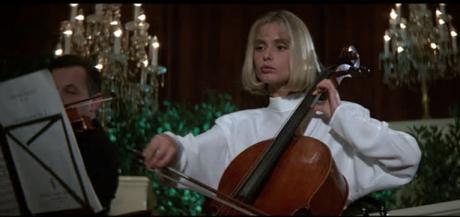
She at first seems naïve to the point of absurdity, but becomes a more assertive character as the movie progresses, managing to rally Afghani rebels to assist Bond when they express initial unwillingness, following an action scene that feels directly inspired by 1981's Raiders of the Lost Ark, as well as getting a chance to fly a plane. She's not one of the all-time Best Bond girls, but she's given more agency that has always happened in the past, and she has a likable chemistry with Dalton.
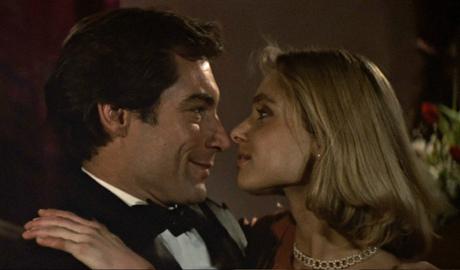
The film, also, has some truly impressive action sequences. From an opening that culminates with Bond parachuting onto an unsuspecting woman's boat to a well-staged car chase to a snow escape via cello case, the film moves at a pace of ever-increasing complications, which is both exciting and exhausting.
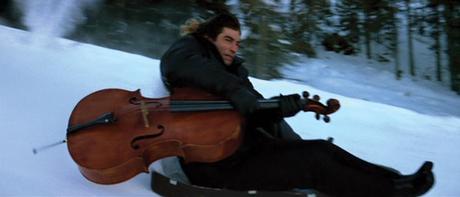
That perpetual pile on of obstacles is perhaps best exemplified by the plane scene near the film's end. Bond give Kara the plane's controls, saying he has to do disable a bomb. As he begins to disable it, Necros emerges from the shadows and a fight ensues. Kara opens up the back of the plane, sending Bond and Necros careening out, both clinging to netting, both continuing to pummel each other while hanging on for dear life.
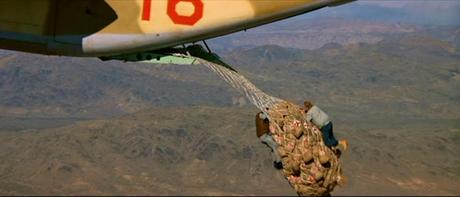
Eventually, Bond manages to get the upper hand, dislodging Necros from the netting and out of the plane, climbs back inside, and disables the bomb. He returns back to the cockpit just in time to see Kara is steering them directly into a mountain, rushing to the controls and raising the plane to a safe elevation just before impact. It's a ridiculous set of "what's next" hurdles, and you can practically feel the writer's glee and giddiness from behind the scenes. It remains a truly exciting action sequence, and Dalton plays it with an endearing mix of horror and exasperation.
If the film has a weakness, it's that, for all of the plot's complications, its villains are lackluster. Joe Don Baker's arms dealer isn't particularly memorable and his climactic encounter with Bond can't help but feel like a bit of a letdown after everything that happened on the plane. Koskov feels equally underdeveloped. They're fun enough adversaries, but they also feel a bit silly in a movie that's attempting to be a bit more serious.
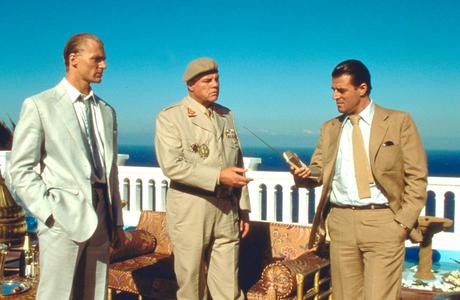
In fact, the most memorable supporting character becomes Rhys-Davies's Pushkin, who manages to be a charmingly ruthless but honorable KGB agent. When the film pivots to the villains, I find myself wishing those scenes belonged to Pushkin. He's a more compelling, complicated supporting character, and he pulls focus from the villains in a way I'm not certain the film intends.
There's also something unintentionally hilarious in hindsight about making Afghani rebels the supporting heroes of the film, with the knowledge they'd go on to be the future Taliban (and the joke about them having trouble at the airport has remained more timely than would have seemed possible in 1987). However, the fact that they're non-white character who aren't offensive stereotypes or villains is progress for the Bond franchise, so I shouldn't pull at that thread too forcefully. It's a bit unfair to expect the Bond franchise to predict how complicated relations with Afghanistan were going to become when even governments couldn't see it coming.
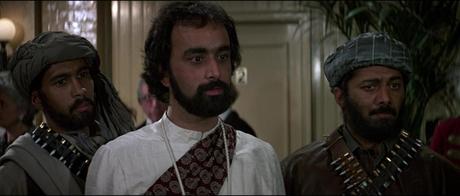
Despite a few nitpicks, I quite like The Living Daylights. It represents an attempt to pull back from the excesses and camp that define the Moore era and actually create a Bond film with suspense and stakes. It's the Dalton title that plays to his more serious, grittier instincts, while also still feeling like a Bond film. It's a little too long and a little too convoluted, but it rewatches well, and Dalton's portrayal feels more appropriate now than it probably did at the time. His weathered, burdened take feeling more appropriate in a post-Craig world.
The franchise was sixteen movies deep with The Living Daylights, and its primary objectives were to define the new Bond, provide yet more evidence of the franchise's durability, and right a ship that been sailing on particularly rough waters prior to this moment. The Living Daylights isn't perfect, but it does manage to accomplish those goals.
Tomorrow: A View to a Kill

